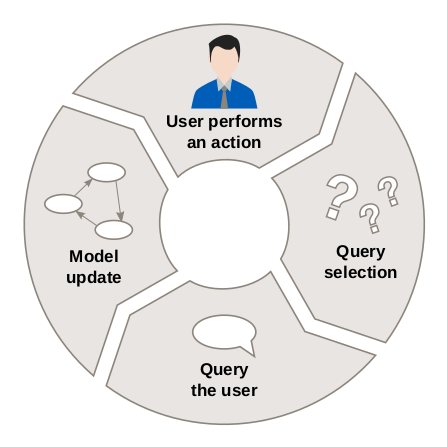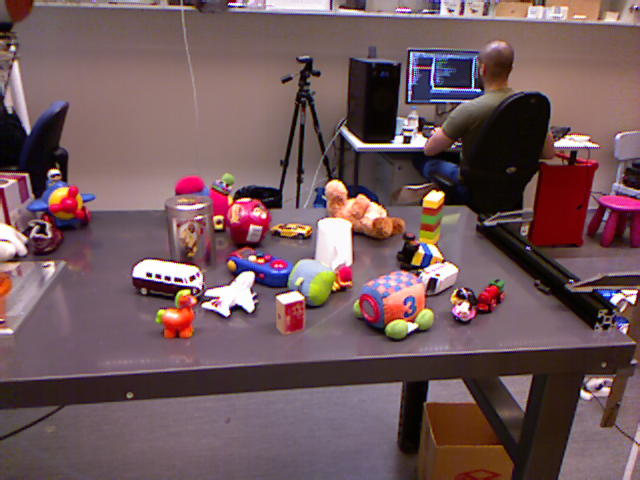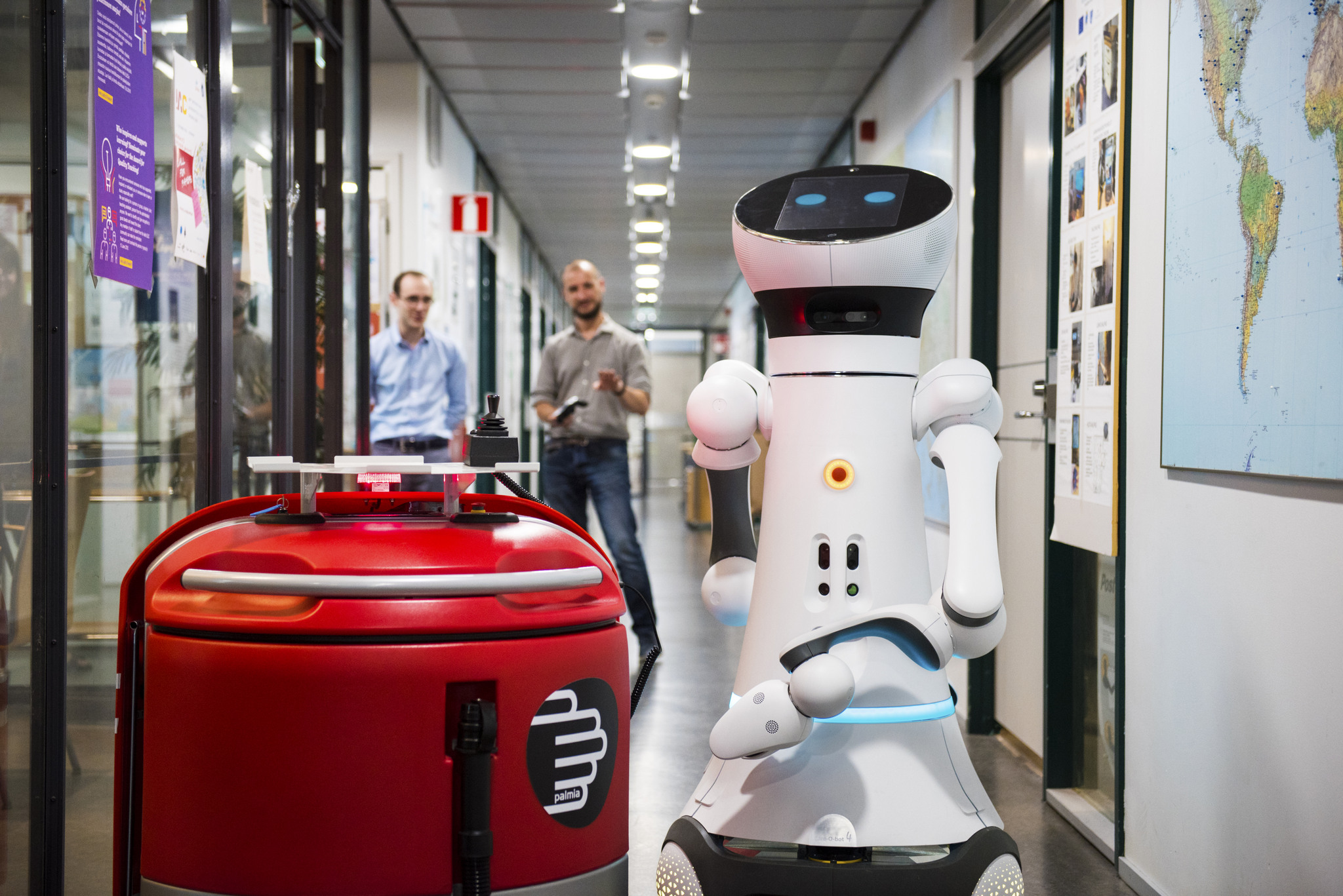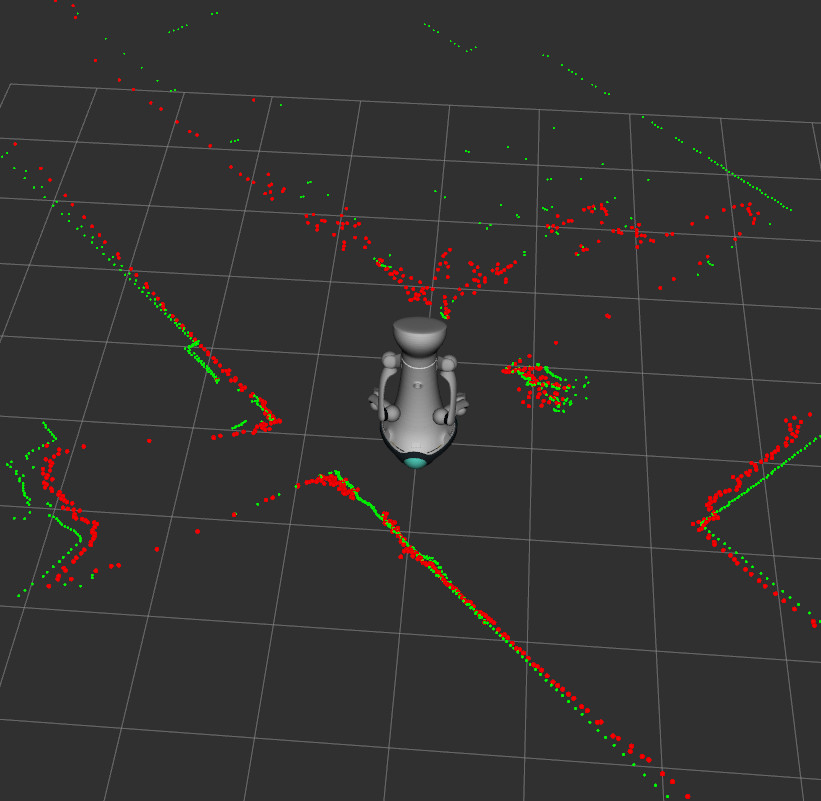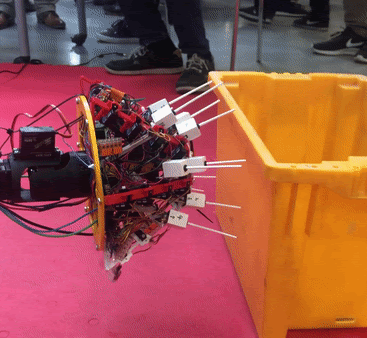Category: Uncategorized
Sim-to-real transfer in reinforcement learning
Getting robots to autonomously learn to perform various tasks is often a long-term process, during which the robot’s exploratory actions can be unpredictable and potentially dangerous to the surrounding environment and to the robot itself. To mitigate the risk of hardware damage and to speed up the learning process, initial phases of learning are often […]
Shape-based grasping
In robotic grasping, knowing the object shape allows for better grasp planning. However, in many environments it is impossible to know a priori the shape of all possible objects. For this reason, the object to be grasped is usually perceived through some sensory input, commonly vision. However, one of the main problems with this approach […]
Teacher-Learner Interaction for Active Learning Robots
Service robots will be deployed in the future as general assistive devices in dynamic human environments like households, schools and hospitals. In order to be valuable and cost-effective assistants, robots must allow a wide range of customization, especially regarding their skills. As pre-programming robots for every situation is impossible, robots need to gain new skills […]
Toy Dataset
The toy-dataset is a new RGB-D dataset captured with the Kinect sensor. The dataset is composed of typical children’s toys and contains a total of 449 RGB-D images alongside with their annotated ground truth images.
Mapping and Navigation
For any mobile robotic platform, the ability to navigate its environment is important. Avoiding dangerous situations such as collisions and unsafe conditions is a crucial capability to achieve autonomy. Moreover, robots need to maintain a representation of their environment in order to properly operate inside it; this is achieved through maps, often built by the […]
Robotic Perception
Robots’ ability to interact with their surroundings is an essential capability, especially in unstructured human-inhabited environments. The knowledge of such an environment is usually obtained through sensors. The study of acquiring knowledge from sensor data is called robotic perception. Perception is the first step in many tasks such as manipulation or human-robot interaction.
Robot Learning
Programming robots to perform various tasks often requires extensive domain knowledge and a tedious programming process. The size of the program rapidly grows with task complexity; explicitly programming a robot to perform challenging tasks in a variety of environments would require the programmer to write routines for an enormous number of situations that may possibly […]
Bio-inspired Robotics
Biological systems may serve as an inspiration for robots. Nature can provide inspiration to the designs of physical components such as sensors and actuators, as well as computational processes such as perception or decision making. What we do Tactile sensing inspired by both morphology and operation of rat whiskers; Study of human navigation behavior to […]
Manipulation and Grasping
Robotic grasping has been studied for more than 30 years as it is an essential skill for both industrial and service robots. Most grasp generation methods rely on known objects and a static environment with no clutter, assumptions which are not applicable in more dynamic environments such as homes. In these environments robots need to […]
Human-Robot Interaction
Service and collaborative robots are becoming more common in dynamic human-inhabited environments. Robots have potentially a wide range of capabilities, making them the perfect candidates for the role of general assistive devices. To be fully effective, robots must adapt to their end users’ needs. Users, however, may lack the technical skills to properly instruct robots […]


